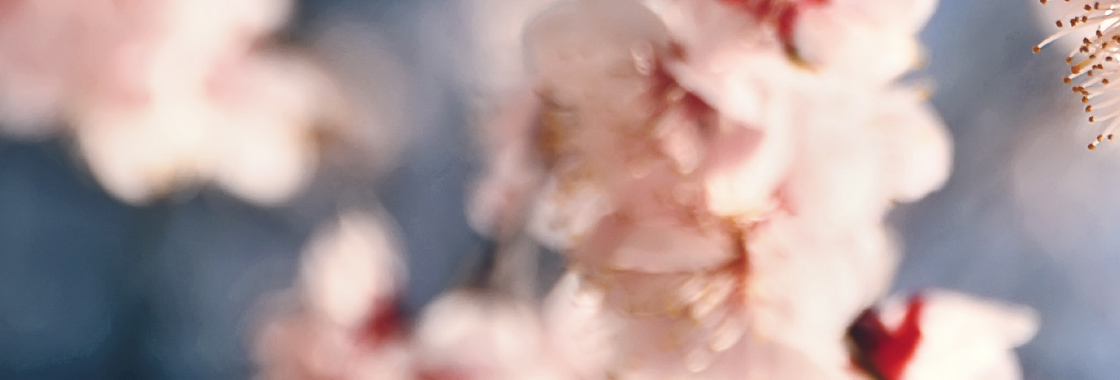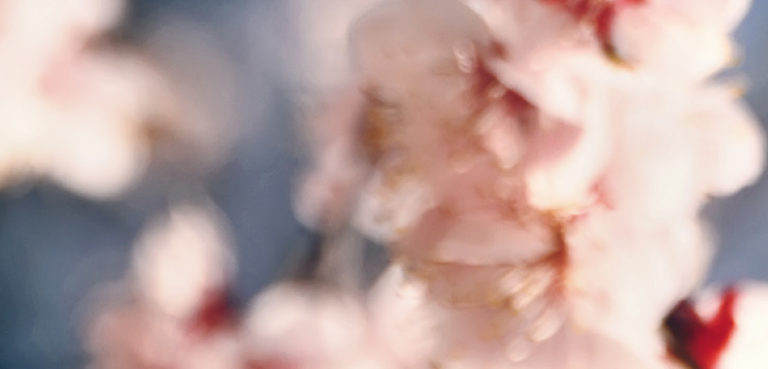Tourists flock to Japan every year to see the cherry blossoms in full bloom, intent on experiencing their beauty firsthand.
The delicate cherry blossom is the national flower of Japan (along with the chrysanthemum). In spring (sakura) celebrations are held across the country to welcome the new season and appreciate the wondrous beauty of nature. Flower viewing is called ‘hanami’ and is an important event in the Japanese social calendar.
The Japanese cherry, prunus serrulata, blossoms from January through to May in different locations around the country.
When is cherry blossom season in Japan?
In some parts of Japan, cherry blossom season starts as early as January. Thanks to Okinawa’s subtropical climate, the first blossoms of the country can be seen here. In the north, in Hokkaido, the climate is cooler and flowers bloom as late as May.
In cities like Tokyo, Kyoto and Osaka, cherry blossom season usually begins at the start of April. Once the trees have reached full bloom, known as ‘Mankai’, there is only a week to appreciate the spectacle before the blossoms begin to fall from the trees. When planning a trip to see the blossoms, ensure that you research the predicted dates for flowering. The Japanese Meteorological Agency tracks the progress of the blossoming around the country. There are experts, and websites, dedicated to precisely this information.
How long does cherry blossom season last?
From the opening of the first blossoms, known by the Japanese as Kaika, it is about one week before the trees are in full bloom (Mankai). After that, there is only one more week and then the blossoms have dropped to make a carpet of pink and white across the surface of the Earth.
Luckily for tourists, the trees around Japan blossom at different times so it is possible to tour the country for a few weeks and experience more than one area in full bloom.
There are forecasts made by experts who have studied the weather patterns, investigated the blossoming season from the previous season, and analysed data concerning temperatures and growth rates of the trees as well as many other related factors. If you’re planning a Hanami tour, you can research the best times and locations for viewing here. Predictions are usually updated by the end of January for the coming year.
What happens at cherry blossom festivals
During cherry blossom season you’ll find many festivals are thrown in honour of the event. Whole communities gather at parks and gardens to celebrate the arrival of spring and the beauty of nature with an elaborate picnic. Families, friends and groups of co-workers share meals, sing and revel in the sublime prettiness of the environment from morning till night.
Shops in Japan will sell picnic products aligned with the hanami (flower viewing) theme; dyed pink rice balls, red bean sweet treats, sticky dyed pink rice cakes wrapped in cherry leaves, and bento boxes with colourful spring-themed delights. Just head along to a park, spread out your blanket in a free space and join in with the crowd.
If you don’t have time to pack your own picnic you’ll usually find food stalls set up at most festivals. Trees are also decorated with pretty paper lanterns, so that the blossoms can be enjoyed well into the night.
History of cherry blossoms in Japan
The Japanese have been celebrating cherry blossom season for hundreds of years. Not only does it mark the arrival of spring, the blossoms are seen as a symbol of hope and renewal. The celebration is an expression of the cultural importance of these two themes in Japan. As the environment renews itself, so do the people. Buddhist literature implies that the delicate petals of the cherry blossoms are a metaphor for the frailty of life.
The best cherry blossom festivals in Japan
There are many wonderful cherry blossom festivals in Japan. In Tokyo, visit Shinjuku Gyoen (near Shinjuku station). There are thousands of species of cherry trees growing here. Yoyogi is another park that is popular for picnics during the season. The park has large expanses of lawn on which to set up blankets and tables. Over in Nakameguro, near Shibuya, more than 800 cherry trees line the Meguro River, producing a magnificent spectacle of pink blossoms along the riverbank. This is especially pretty at night when the trees are lit up with lanterns.
Bokutei Cherry Blossom Festival
One of Japan’s most beloved hanami festivals, the Bokutei Festival is located in Sumida Park between the Azumabashi Bridge and the Sakurabashi Bridge. This one-kilometre boulevard attracts huge crowds throughout the season. The blossoms are illuminated at night, as is the spectacular Tokyo Skytree, so there is no need to rush off when the sun sets. For a different perspective you can hire a boat and enjoy a view of the cherry blossoms from the river. You’ll also find Japanese performance artists entertaining guests with their bamboo blinds throughout the festival.
Ueno Cherry Blossom Festival
Ueno Park has over 800 cherry trees which are also illuminated after dusk. Large crowds are attracted to the festivities here, as the park has been made famous in Japanese literature and photography for centuries. Park stalls sell delicious food like yakitori, takoyaki and yakisoba, or you can bring your own picnic. The Aozora Antique Market also runs during the cherry blossom festival.
Nakameguro Cherry Blossom Festival
One of Tokyo’s most famous locations for cherry blossom viewing, the festival is held along the Nakameguro Canal. Grab a sakura-themed pink champagne and explore the shops and stalls lining the water’s edge. Venture onto the bridges that cross the river to enjoy the incredible view from as many vantage points as possible.
Chiyoda Cherry Blossom Festival
This is one of Tokyo’s best places to see cherry blossoms. At Kitanomaru Park, visitors can hire a rowboat and enjoy the view of the blossoms from the moat of the historic Edo Castle. There are food stalls set up along the 700 metre walkway and the trees are illuminated at night, to keep the festivities going.


